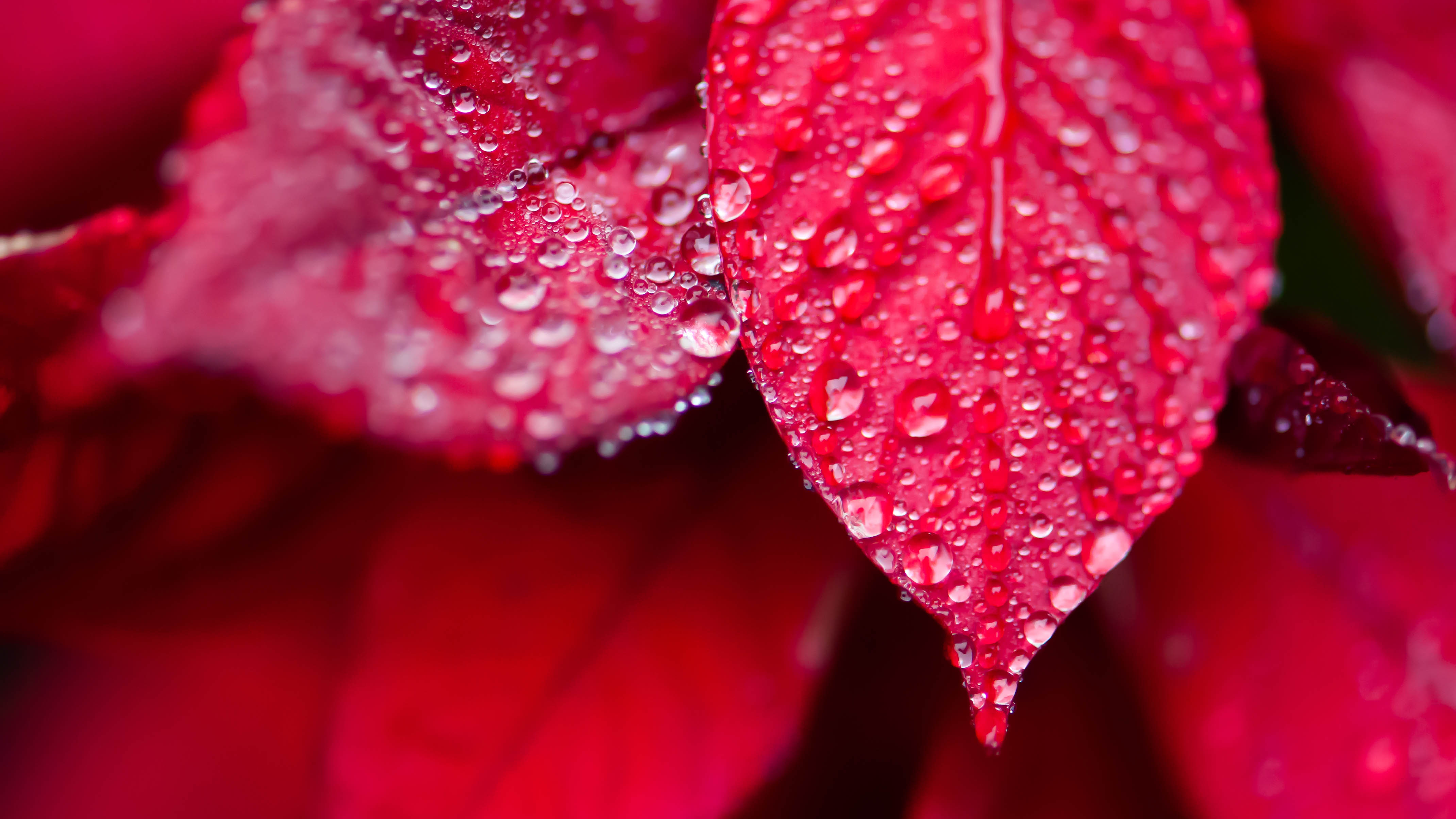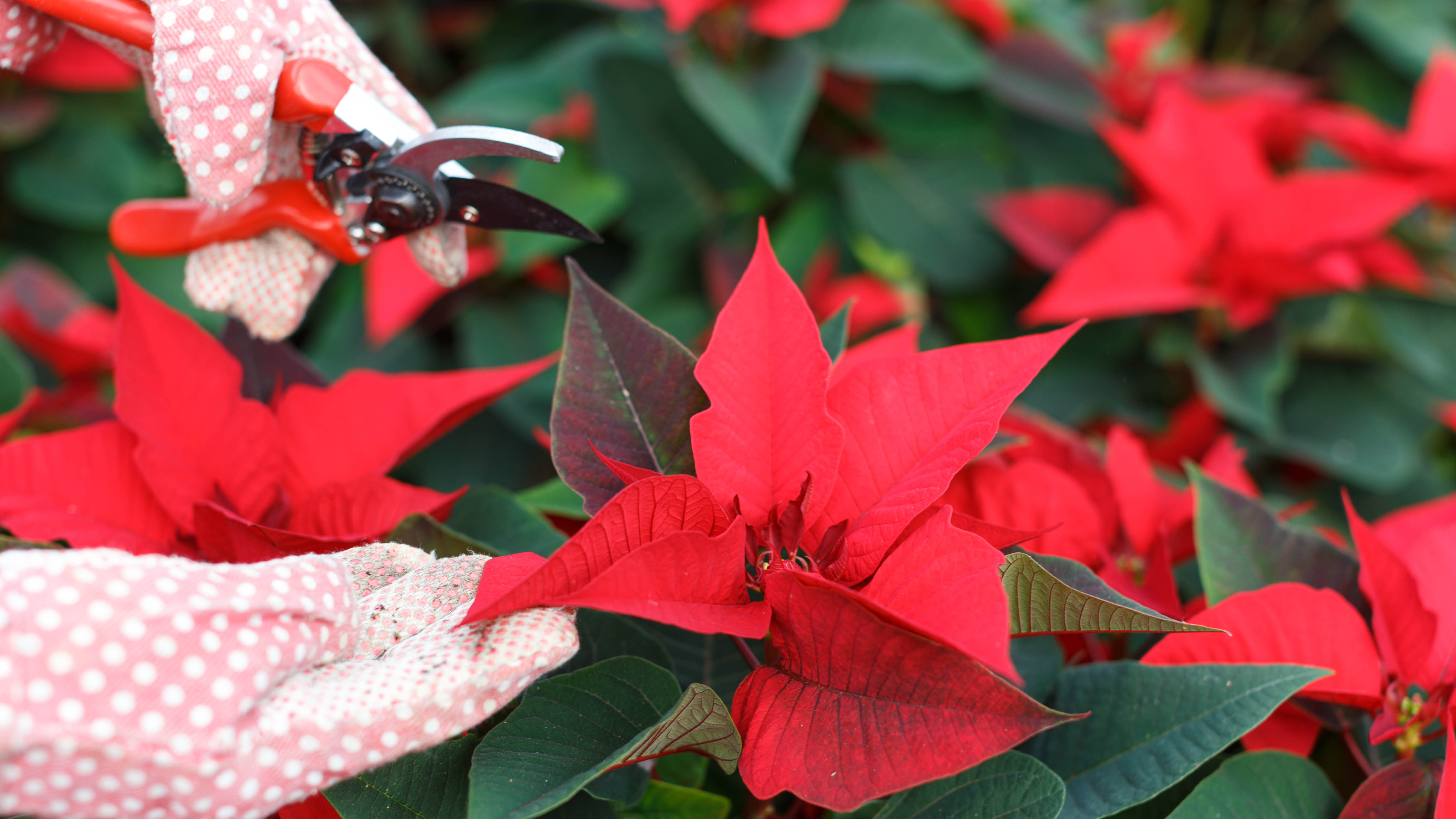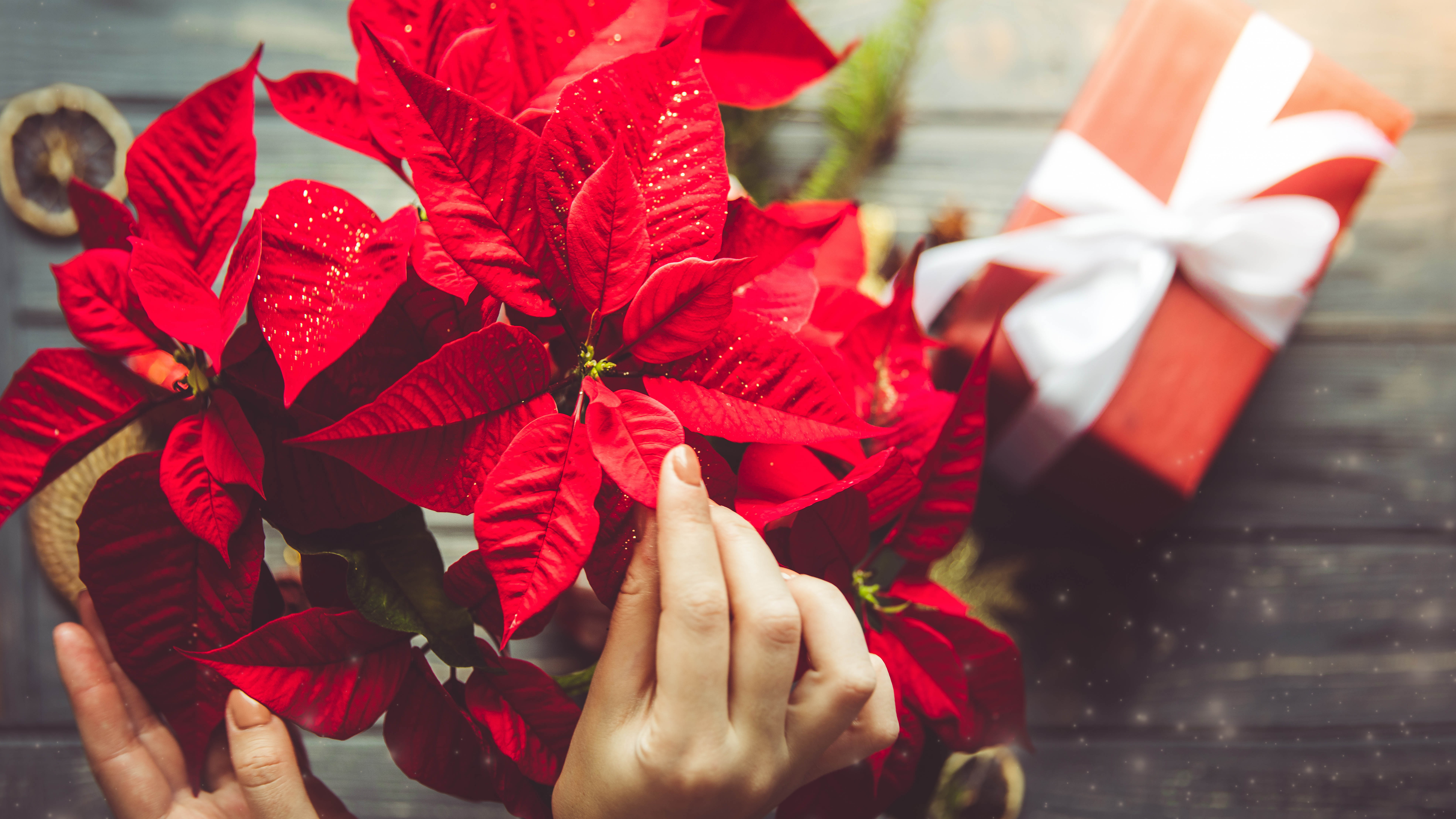How to care for a poinsettia in 6 simple steps
Knowing how to care for a poinsettia can help your plant flourish and thrive.

If you’re looking up how to care for a poinsettia, odds are you’ve been gifted one of these gorgeous plants for the holidays, or have bought a few to liven up your home. Featuring vibrant, red bracts, poinsettias couldn’t look much more festive, and the good news is that they’re relatively easy to care for, much like caring for succulents. Having said that, every plant can benefit from proper attention, and by making a few small changes, you can improve the overall health of your poinsettia, and get it to last beyond the holidays.
Not only will this keep it strong and thriving into the New Year, you can also encourage the growth of fresh flowers in the future. So, if you want the best for your poinsettia, read on to discover our tips, tricks and methods for best care. We will cover everything from watering to pruning to best soil conditions, so you can rest assured that you will be an expert on your poinsettia by the time you’ve finished reading. Here’s how to care for a poinsettia.
For more houseplant advice, be sure to check out how to care for an orchid, 5 tips to keep your Christmas cactus flowering year after year, and how to care for a spider plant. And while you're caring for your Christmas houseplants, if you've got no space for a standard Christmas tree, you might be interested in these 5 alternative houseplants to add festive cheer.
How to care for a poinsettia
Watering

Poinsettias are a little picky when it comes to watering — not too little or too much is required. Overwatering is one of the prime killers for new poinsettia owners, so it’s important to get this balance right.
The aim is to leave the soil moist, but not drenched or soggy. So let the water flow through the soil during each session and stop when you see it’s running out the drainage holes. Let the excess water drain away and then you can pop the plant back on its shelf. Do not let your poinsettia stand in residual water in the tray or saucer. You can alternatively saturate your poinsettia in the kitchen sink if preferred. Again, wait until water drips from the drainage holes and then leave it stand and drain completely before replacing.
At the same time, make sure your poinsettia doesn’t get too dry between sessions. If you dig your finger about a centimeter into the soil and it feels bone dry, your poinsettia is thirsty. You can also tell because the plant may feel unusually light, to the point where smaller pots are easy to knock over. Some poinsettias are small enough that the weight of the leaves can tip over the pot when it’s dried through.
How often you need to water depends on the size and location of your poinsettia. Smaller plants and those in hotter environments may need watering as much as daily. Check your poinsettia regularly to calculate how often it needs watering, and bear in mind that conditions will change over the year. Larger plants will need watering less often when the temperature drops.
Get instant access to breaking news, the hottest reviews, great deals and helpful tips.
You can also feed your poinsettia to encourage its growth, however this won't be necessary while the flowers and red bracts are still in bloom. Once the flowers drop, feed your poinsettia a dedicated houseplant fertilizer, such as Miracle-Gro Indoor Plant Food ($8.82, Amazon). Follow the recommended instructions for dosage and dilution. Every few weeks is fairly standard for application.
Light and temperature

Ideally, your poinsettia should be kept in temperatures ranging from 65-70°F. This means most will be kept as indoor houseplants, but it is possible to grow them outside in warmer climates. Poinsettias also thrive in bright, humid environments, but not in direct sunlight, which can actually burn the leaves.
For this reason your poinsettia should be placed somewhere where it gets regular indirect sunlight, or at least where the sunlight is less intense, such as an east-facing windowsill. Your plant also shouldn’t face extreme temperature fluctuations, so it should be nowhere near one of the best space heaters or a drafty door. This can impair the growth and damage the plant.
How to keep pests away

Unfortunately, poinsettias can fall victim to pests just like any other houseplant, so you will need to keep an eye out for any unwelcome guests. Of all the pests, Whiteflies are the most common. These tiny, winged insects look like white speckles on the underside of leaves — they feed on sap, resulting in damage to the leaves and the overall plant itself.
To get rid of Whiteflies, you will need to buy an appropriate insecticide, such as Natria Neem Oil ($11.39, Amazon), and apply as directed by the manufacturer. If you suspect pests on your poinsettia, be sure to move it away from your other plants and quarantine it until the problem is resolved.
Repot in the appropriate soil

You want your poinsettia to be potted in an appropriate houseplant soil, such as Miracle-Gro Indoor Potting Mix ($5.98, Amazon). This ensures that your plant is getting access to the necessary nutrients that it requires. Ideally, the pH should be slightly acidic, ranging from 5.8-6.5. You can always check the conditions using a soil test kit, such as the SONKIR Soil pH Meter ($9.99, Amazon).
Repotting is best done in the spring or early summer, when your poinsettia is about to start growing. So avoid repotting it immediately if you receive one over the holidays. Repotting will be necessary if you notice it’s become root bound, potentially with roots protruding from the drain holes of the pot.
If such is the case, move it to a terracotta pot which is 2 inches wider. Terracotta is better than plastic because it’s more porous and allows the soil to dry more quickly. It also gives your plant better access to oxygen as well. Make sure it has at least one drain hole so the water can flow through.
Pruning

Your poinsettia will need pruning once it drops its red bracts in the early spring. You can use a pair of one of the best pruning shears to do this. First, remove any obvious dead foliage, and then prune back the branches, leaving about 4-6 inches remaining. This may sound extreme, but it is what’s required to give your poinsettia the best chance of growth. Be sure to remove any branches and leaves which show signs of disease as well, and always prune at a diagonal angle so water will run off the cut in the future.
If you want to encourage more red bracts, you may also want to prune your poinsettia in the late summer. This is a softer prune versus what you had to do in the spring — just taking the ends off the shoots, with three or four leaves left on each branch.
Regrowing for next year

To get more flowers and red bracts on your poinsettia next year, you’re going to need to submerge it in complete darkness for 14 hours each night for six weeks or so. That means to get it blooming in time for the holidays, you’re going to have to start working on it from October time.
Some will move the plant to the garage or basement during this time, while others may just cover it over. You just need to make sure that you’re consistent with the routine and don’t subject the plant to too much of a temperature fluctuation. Once the flowers start to bloom, you can let your poinsettia have access to regular light conditions again. Bear in mind that it’s rare for the bracts to look as good as when you first received your poinsettia, but it’s still a rewarding experience.
For more planting tips, tricks, and how-tos, check out our guides on how to prune hydrangeas, how to care for an orchid, and how to plant sunflower seeds.

Katie Mortram used to be a Homes Editor for Tom's Guide, where she oversaw everything from kitchen appliances to gardening tools, as well as smart home tech. Specializing in providing expert advice for cleaning and home manintenance, she now works as Household Advice Editor for Good Housekeeping.
